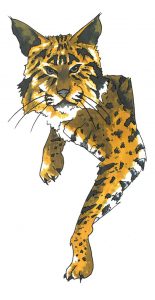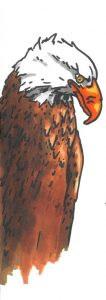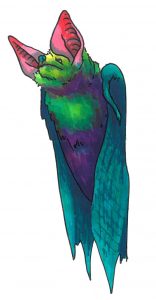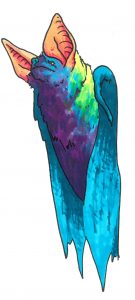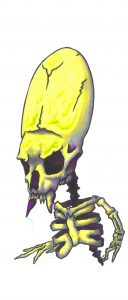Two Wolves Evaluation:
A Plan to Improve Reference Services
Introduction
The Two Wolves Library (TWL) supports the Two Wolves Program, which is a school program run within the Prince George Youth Custody Centre (PGYCC). The TWL is a small library with approximately 1600 books. As well, its collection includes about 100 movies stored on optical discs and 50 music albums stored on Compact Disc. The TWL has access to a number of digital services through the District Learning Commons (DLC). Student accessibility of these resources is somewhat limited due to the institutional nature of the program. The TWL is undergoing a period of extensive reorganisation and maintenance, and evaluation of the library’s collection and services is a part of the process in evolving the existing program towards a modern Library Learning Commons (LLC).
Evaluation
Evaluating the Two Wolves library reference collection was a multi-step process. In Reference Skills for the School LIbrarian, Riedling and Houston (2019) outline the selection guidelines for evaluating different reference resources. These guidelines were amalgamated into a rubric in Evaluating a Reference Material (link) (Mack, 2023a). The scope of the rubric was altered so that it examines the reference component as a whole rather than an individual resource. Next, five representative samples were examined individually for accuracy, authority, currency, and accessibility, with the results averaged to give information about the component as a whole (Appendix A). A summary of the results is listed in Table 1 below.
Figure 1: The Two Wolves Library doesn’t have a reference section. Different reference components are shelved in different parts of the library. Shown here is a portion of the collection’s dictionaries and thesauruses (own photo).
Once the quality of each component of the reference section is known, the reference collection as a whole can be evaluated. The Canadian School Libraries Association (CASL) (Asselin, Branch, & Oberg, 2006) sets several standards required for effective libraries, as well as a rubric for evaluating a library program. Standards associated with evaluating the reference collections were combined in a rubric and the reference collection was then evaluated in Table 2.
Table 1:
Evaluation of Reference Materials by component
| Reference Component | Summary |
Evaluation |
| Bibliographies | The library contains no print resources of this type.
The library has access to several digital resources, including no cost options available online and resources available through subscription services. Representative samples:
|
Average Score
Total: 3.4
Notes: The scope score is leniently judged because of the limited use of this component by students. The low accessibility score is due to the lack of immediately accessible (print) resources. |
| Ready-
Reference Tools |
The library contains a number of print fact books and almanacs relating to facts, history, science, and politics. There are also several handbooks and style manuals.
The library has access to several no cost digital Directories and Yearbooks found online. Representative samples:
|
Average Score
Total: 3.3 Notes: The low scope score is due to the lack of fact books for some subjects. |
| Biographical Sources | The library contains no print resources of this type.
The library has access to digital biography indexes through subscription services EBSCO and GALE Group, as well as no cost options online. Representative samples:
|
Average Score
Total: 3.2 Notes: The low score for scope is due to the lack of Canadian content in this component of the collection. |
| Dictionaries | The library contains a wide selection of print dictionaries and thesaurus. They are from a variety of publishers, and in a variety of formats. There are also a variety of speciality dictionaries, including language dictionaries, thesauruses, literary dictionaries, and science dictionaries.
The library has access to digital dictionaries through subscription services as well as no cost options available online. Representative samples:
|
Average Score
Total: 3.6 Notes: The low score for currency is due to all of the print resources being published more than 5 years ago. |
| Encyclopedias | There are several subject volume encyclopaedias covering a variety of subjects at a variety of grade levels. There are no general single or multi-volume encyclopaedias.
The library has access to digital encyclopaedias through the subscription service EBSCO, as well as no cost options online. Representative samples:
|
Average Score
Total: 3 Notes: Both the print resources are older than 15 years. |
| Geographical Sources | The library contains several print atlases, maps, globes, and travel guides.
The library has access to digital geographical sources through subscription services as well as no cost options available online. Representative samples:
|
Average Score
Total: 3.4 Notes: All physical resources in this component are older than 5 years. |
| Indexes, Periodicals, and Databases | The library contains no print resources of this type.
The library has access to digital indexes, periodicals, and databases through EBSCO, Gale, and ProQuest. Representative samples:
|
Average Score
Total: 3.6 Notes: The library has access to some of the most important resources available. Since all of the resources in this component are online, they are relatively inaccessible to our students. |
Overall, the Two Wolves Library’s reference collection is rated as “Acceptable,” although both the Reference Facility Support, and Reference Furniture and Equipment were “Below Average” (Table 2). Both of these categories involve the ease with which users access the reference collection. Looking at the individual components of the reference collection, the indexes, periodicals, and databases, and the dictionary sections were the most highly rated. The encyclopaedia and biographical sections were the most lowly rated. This was mainly due to lower scores in the scope category, where the encyclopaedia and biographical components had fewer resources to support the school’s curriculum. The lowest scores for all components tended to be in the accessibility and currency categories.
The biggest issues with the Two Wolves Library’s reference collection are with its accessibility and currency. The library has access to some high quality digital resources, however it lacks the equipment to retrieve that data. There are no computer workstations in the library and the classroom workstations don’t have internet connectivity. Currently, students must use a teacher’s laptop to access digital resources under direct supervision. For print resources, most materials are older than 5 years old, with several being older than 15.
Table 2:
The Two Library’s Reference Collection Analysed by CASL Standards
| Area | Description | CASL Standard |
| Reference Resources | The average of the score (3.4) for the individual reference section components. | Acceptable |
| Periodical Indexes | The library has several electronic indexes, but no print index. | Acceptable |
| Collection
Maintenance |
Most items in the reference section are in good condition. | Acceptable |
| Reference Facility Support | The library has limited access to electronic references.
Print reference materials are not near the circulation area, and some resources are stored in different areas of the library. |
Below Standard |
| Reference Furniture and Equipment | There is no specialised furniture. The library lacks computer access. | Below standard |
Rationale for Change
The Canadian School Libraries Association (CASL) (Asselin, Branch, & Oberg, 2006) writes “Access to information and ideas is essential for students to become critical thinkers, competent problem solvers, and lifelong learners” (p.23). The reference collection is an entry point for knowledge, and so it needs to be of a high standard.
Key components of a successful LLC are currency and accessibility of resources. Up to date resources ensure that the information is of high quality, free of misinformation, free of outdated concepts, and enables learning. Access is another key component of a successful LLC, and this includes providing a variety of print and digital collections, and ensuring that “differentiated, rich, and diverse collections” (Ekdahl & Zubke, 2017) are available to students. If resources aren’t accessible, then they’re not usable by the library’s patrons. Accessibility means that the students should have the technology, equipment, and furniture to access the collection easily, in its entirety, wherever work is being conducted. The reference collection needs to have a designated spot, close to the circulation counter, so that the reference collection can fulfil its function of providing readily accessible information. The constraints on internet and technology use in the centre means that the library should emphasise print resources. Accessibility also means that students are able to find the resources they need. Useful resources will become camouflaged if they are mixed among lower quality materials. Weeding will benefit a collection by improving its “accessibility, appearance, currency, circulation and additional space” (Dubicki, 2008).
The lack of accessibility and currency are negatively affecting student learning by decreasing their information literacy and the quality of their research. Students can’t learn properly use reference materials if they’re taught with reference services that are below standard. The deficiencies of the reference section of the library are illustrated by its use by students. An experience with past student assignments shows that student references lack quality and diversity. These assignments show an over utilisation of singular resources of poor authority like Wikipedia.
Plan
Resolving the issues with Two Wolves Library’s reference services will involve both immediate solutions as well as larger structural changes. Many of the issues with currency and accessibility can be swiftly resolved by purchasing modern print resources. Weeding the collection has started, but will take several more months to complete. The plan to improve the reference section of the Two Wolves Library is integrated with the larger plan to improve the library as a whole through categorisation and reorganising . Transforming a library into a LLC is a process that involves commitment, planning, and executing a long term plan (Ekdahl & Zubke, 2017). This is a multi-year process that has just been implemented, although several steps have already begun and others will occur concurrently.
Figure 2: Weeding the collection has already begun (own photo).
Table 3:
Two Wolves Program Plan to Improve Reference Section
| Date Completed | Task |
Details |
| April 2023 | Consult | Who: The teacher in the Position Of Special Responsibility (POSR) with the institutional directors and school administration.
The Two Wolves POSR needs to consult in order to collaborate on solutions to the library’s shortcomings. Specifically, solutions to the lack of technology, and the resulting lack of access to curricular resources, need to be found. |
| September 2023 | Acquire resources | Who: The POSR
The program should acquire resources to immediately address the issues noted in the collection evaluation. This includes purchasing single volume print encyclopaedias and various print fact books to address the issues with the scope and accessibility of the reference collection. This resources include:
Also, older print resources need to be replaced. Resources older than 5 years old should be identified during the weeding process and the oldest resources should be immediately replaced with new resources. These include:
|
|
September 2023 |
Create Plan | Who: Written by the POSR with input from the school community An initial plan for the formation of a program Library Learning Commons needs to be completed and presented to the school community. |
| December 2023 | Collection Maintenance | Who: conducted by the humanities teacher and the student librarian under the direction of the POSR
The Two Wolves Library is in desperate need of weeding, cataloguing, and reorganising. Weeding needs to occur first, so that time isn’t spent organising parts of the collection that will be removed. This portion of weeding of the library is being conducted systematically section by section. Weeding of the non-fiction section is scheduled to be completed by the end of the summer, with weeding of the intermediate fiction section beginning 15 September 2023. The complete schedule for weeding is located here (link) (Mack, 2023b). |
| December 2023 | Consult with DLC | Who: The POSR with the district head TL
Consult with the District Learning Commons to create a plan to organise and catalogue the collection. |
| March 2024 | Create New Annual Budget | Who: created by the POSR
Create a new annual budget to address deficiencies. Specifically, request money for:
|
There are several foreseeable challenges. The primary issue is that cataloging and classification of library resources are tasks overseen by the District Learning Commons within the district. Reorganising the library is therefore entirely dependent on their availability. The timeline to reorganise the library will ultimately rely on the DLC’s schedule. Another issue regards the budget. It’s possible that the Ministry of Education and Childcare won’t authorise the increased expenditures. If that occurs, improving the the reference section will still occur, but at a slower pace and the competing library needs will have to be re-evaluated.
Purchasing up-to-date print references will instantly improve the library collection. More substantial improvements can be tracked by evaluating the collection. Marcia Mardis (2021) suggests several methods of evaluating components of the library collection, including several user-centred methods. User surveys, of both students and teachers, will be conducted at the end of each school year. The references of student assignments will also be examined to see what references are being used and how. These evaluations will be used to update the LLC upgrade plan, which will be available to the entire school community. A summary of these results will also be included with the annual report to the Ministry of Education and Childcare.
With this plan, some of the more immediate issues with the library can be solved promptly. Some of the other issues are larger and relate to larger structural deficits in the Two Wolves Library program and will take more time and effort to address. The process to improve the library has begun, but because the program requires so much maintenance, it can only be solved by restructuring the library as a whole. These issues will be addressed as the library moves towards becoming a fully realised Library Learning Commons. That process is only in the beginning stages, with initial consultations taking place this week with the school community in order to determine how to best proceed. An initial plan for a three year process of action is scheduled to be completed by September 2023.
Appendix A
Completed rubrics: Evaluating Reference Materials (Link).
References
Asselin, M., Branch, J., & Oberg, D., (Eds) (2006). Achieving Information Literacy: Standards for school library programs in Canada. Ottawa, ON: Canadian School Library Association & The Association for Teacher-Librarianship in Canada. Retrieved March 30, 2023 from https://accessola.com/wp-content/uploads/2020/08/2003-AchievingInfoLiteracy.pdf
Canadian School Libraries (CSL). 2020. Leading Learning: Standards of Practice for School Library Learning Commons in Canada. Retrieved March 2, 2023, from http://llsop.canadianschoollibraries.ca
DK (2014). The Science Book: Big Ideas Explained. DK Pub.
Dubicki, E. (2008b). Weeding: facing the fears. Collection Building, 27(4), 132–135. Retrieved March 29, 2023, from https://doi.org/10.1108/01604950810913689
Lloyd, C. (Ed.). (2020). Britannica All New Kids’ Encyclopedia: What We Know & what We Don’t. Britannica Books.
Mack, D. (2023a). Evaluating a Reference Material. Just this guy learning about libraries. Retrieved March 27, 2023, from https://blogs.ubc.ca/pgdan/2023/02/09/evaluating-a-reference-material/
Mack, D. (2023b). Two Wolves Library Schedule for Weeding. Just this guy learning about libraries. Retrieved March 29, 2023, from https://blogs.ubc.ca/pgdan/2023/03/29/two-wolves-library-schedule-for-weeding/
Mardis, M. A. (2021). Collection Program in Schools: Concepts and Practices, 7th Edition. Libraries Unlimited.
Merriam-Webster (Ed.). (2022). The Merriam-Webster Dictionary (Revised Edition). Merriam-Webster.
Riedling, A. M., & Houston, C. (2019). Reference Skills for the School Librarian: Tools and Tips (4th ed.). Libraries Unlimited.


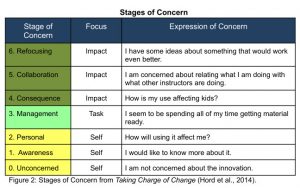
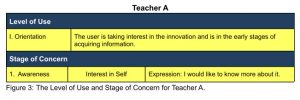

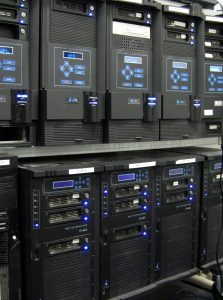



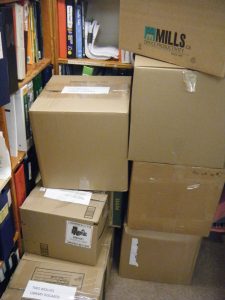
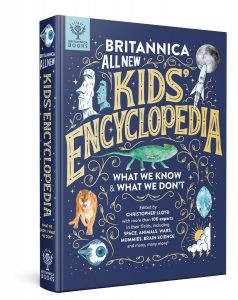
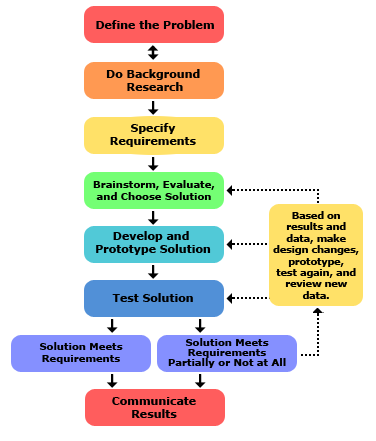 The specific enginneering design model I use is from Science Buddies
The specific enginneering design model I use is from Science Buddies 


